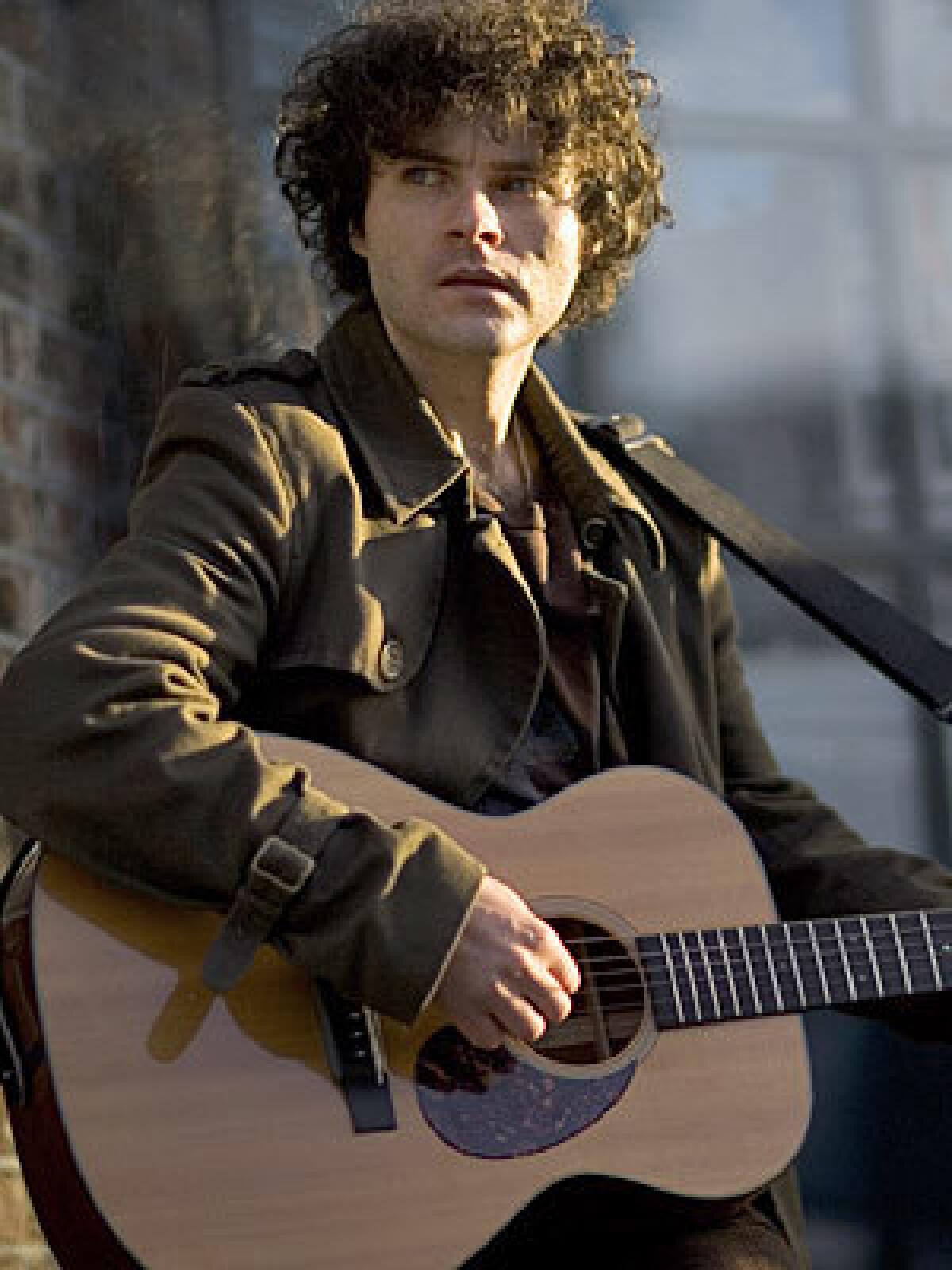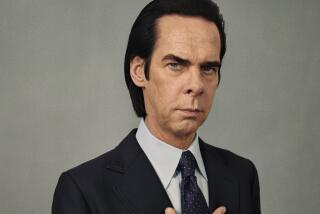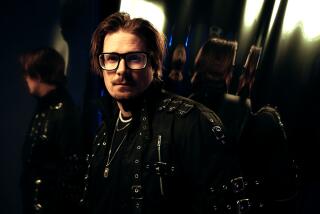Paddy Casey tries his Irish luck

SAN FRANCISCO — PADDY CASEY, the second-bestselling rock act in Ireland, looks a little disappointed as he scans the sparse audience that turned up during rush hour Friday for his debut here at the Virgin Records Megastore.
“You make more money busking,” the singer-songwriter says with the self-deprecating manner that passes for stage patter. “At least you make money busking.”
Bright blue eyes sparking under his long black hair, Casey plays 40 minutes of originals and the occasional surprise cover, such as Blackstreet’s 1996 R&B hit “No Diggity,” with only his voice and acoustic guitar. That one has the crowd bouncing and lets it know that Casey -- who stands a lot taller than his 5-foot frame would have you believe -- is full of surprises.
Backed by the same management team that broke Ireland’s top seller, U2, almost three decades ago, Casey has been touring the U.S. for three months, mostly playing record stores and Hard Rock Cafes through shoddy speaker systems to audiences that don’t have a clue who he is.
All of that could change quickly. On the heels of his recent showcase at Austin’s South By Southwest Music Conference, his third album, “Addicted to Company (Pt. 1),” comes out today on Sony/BMG. Produced by Los Angeleno George Drakoulias, one of the founders of Def Jam records, “Addicted” came out in September in Ireland and was named album of the year in the Meteor Ireland Music Awards. Casey is MTV’s featured artist this week, which includes a 20-foot-high billboard of his face in New York’s Times Square. Thursday he will play on David Letterman’s show. He plays the Wiltern in Los Angeles on May 5 opening for Scottish phenom, KT Tunstall.
If the rest of the country is as impressed with Casey as the San Francisco crowd was, he may have to start writing some happier songs.
Almost every one of the two dozen people who stood through his set bought his new disc and waited for his autograph. They lavished praise on his wistful guitar-playing, direct lyrics and powerful voice, so strong he could have played without the P.A. system. Newfans compared him with John Mayer and Jason Mraz but after spending time with his discs, they might have added Leonard Cohen, with whom Casey shares a knack for creating stark and pitiless landscapes.
“That’s the happiest song I know,” he tells them after opening his set with “Sweet Suburban Sky,” a thick gray song about the end of the world, from his 1999 debut, “Amen (So Be It).”
“The next song is about depression,” he adds. “You’ll be happy to hear it.”
He’s got a sense of humor shaped by more than a decade of playing Dublin streets, where he could make as much as $400 a day in good weather, as little as nothing the other nine months of the year.
The youngest of nine children, brought up in government housing, he picked up a guitar at age 12, and after two weeks of practice, he ran away from his parents’ home in Crumlin and was singing on the streets of Dublin while living in an older brother’s flat.
Listening to his brother’s Simon and Garfunkel albums inspired Casey to write his own songs, which he sometimes played on the street, along with fellow busker Glen Hansard, who this year won both a Grammy and an Oscar for the song “Falling Slowly” from the film “Once.”
Bartenders and theater owners passing by booked them for indoor shows.
His reputation for songwriting spread and drew the attention of Sony talent scout Hugh Murray and U2 manager Paul McGuinness, who also manages PJ Harvey and the Rapture.
“It all starts for me with live performance,” McGuinness says. “Though I can admire multilayered studio work, that’s not what I’m drawn to and never was. I think the busking thing may have had something to do with the strength and power of his voice. I started working with him as a result of that.”
Before long, Casey was being flown to London and shopping for a publishing deal. He stayed in the finest hotels with a borrowed guitar and just enough money to pay for the bus from the airport.
Signed, sealed and delivered to Sony’s S2 subsidiary in 1999, he got his first check in the mail for 80,000 pounds ($159,000) and played the last busking gig where he actually needed the money.
“I put 20,000 pounds ($40,000) of it into my socks and right away went shopping for equipment,” says the 32-year-old, who looks a decade younger and bears a resemblance to “Entourage” star Adrian Grenier. “I bought equipment for a home studio and a guitar, and I gave the rest to friends.”
His first album sold 50,000 copies; his second, 2003’s “Living,” reached about 240,000, most of them sold in Ireland, with its population of about 4 million.
That gives his fans and management hope that this time out he can crack the U.S. market.
“He’s not like Bono, who goes and grabs the camera,” says DJ Tony Fenton of Irish radio station Today FM by phone. “He’s more shy and honest, which I think people like. America is the toughest place to make it, though. Each state is like a different country, and you have to spend two, three or four years there to make a dent.”
In San Francisco this weekend he spent $2,500 for a new Martin guitar to bring to New York but seemed more excited about trying it out on the street in Haight-Ashbury. After 30 minutes of busking, he had collected $15 in his guitar case.
He dropped the cash into the case of another busker down the street.
“Anyone who has done this knows how important the money is,” he says. “It’s no fun when you have to play on the street to survive.”
More to Read
The biggest entertainment stories
Get our big stories about Hollywood, film, television, music, arts, culture and more right in your inbox as soon as they publish.
You may occasionally receive promotional content from the Los Angeles Times.










